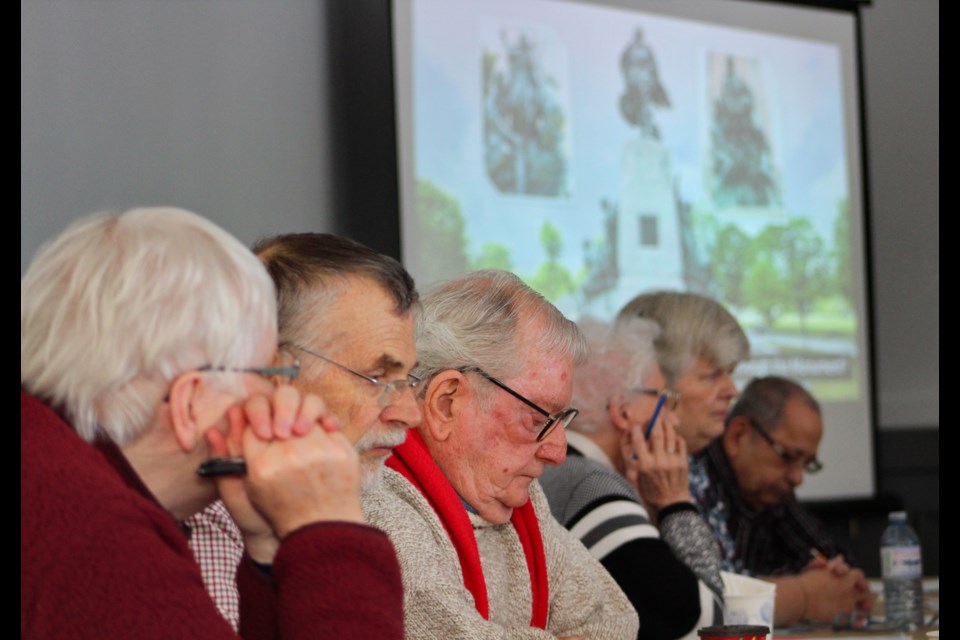Put it back. Reconfigure it. Add to it.
That’s simply a snapshot of the ideas floated Tuesday morning during the first workshop to collect opinions on the future of the Champlain Monument in Orillia.
About 40 people gathered at Swanmore Hall to take part in group discussions. There are varying opinions about what should happen with the monument, which was unveiled in 1925 and remained in Couchiching Beach Park until it was removed in 2017 for restoration.
Respectful disagreements could be found at almost every table in the room Tuesday, including the one occupied by Dale Lovering and Alec Adams.
Lovering wants to see the monument returned, as it is a piece of history.
“Does that mean statues of Saddam Hussein should’ve been left up?” replied Adams.
Adams feels the Champlain Monument and its components show a lack of sensitivity in its characterization of the Indigenous community.
“But that’s your opinion, Alec,” Lovering said, “and you can’t impose those opinions on everyone.”
Janet Maconachie also wants the monument returned without alterations.
“We wouldn’t deface a Van Gogh,” she said. “It is a work of art. It is history. We should leave it as is.”
Colin Old and others at his table had a different view. Because the monument has multiple components, “we can reconfigure the statue in a way that is more politically correct,” Old said.
Lovering seemed open to the idea. In many Indigenous cultures, “they meet in a circle, not like this,” he said of the format of Tuesday’s workshop, suggesting the components of the monument could be set up to symbolize that custom.
Ted Duncan noted art, history and politics are all part of the ongoing debate around the cultural appropriateness of statues around the world.
“We need to concentrate on history, and history is telling stories,” he said, adding storyboards could be added to the monument to better explain the piece and how times have changed.
Some have taken issue with the placement of certain components — for example, the two Indigenous men appearing to cower at the feet of a Jesuit priest.
“Maybe remove the pedestal and sit them all on that platform,” Brian Adams suggested.
Dan Shilling was encouraged by the discussion.
“It was good. I love the openness,” said Shilling, Rama First Nation manager and member of the Champlain Monument working group.
He noted Rama artist Nancy King is working with the First Nation on a concept for an additional piece to the monument, to which the Elementary Teachers’ Federation of Ontario has committed $25,000.
The next workshop will take place April 11, from 7 to 9 p.m., in the Tudhope Boardroom at the Orillia City Centre. The third one is set for April 13, from 1 to 3 p.m., in the Tournament Room at Rotary Place.
The city is also accepting feedback via a survey, which can be found here.
